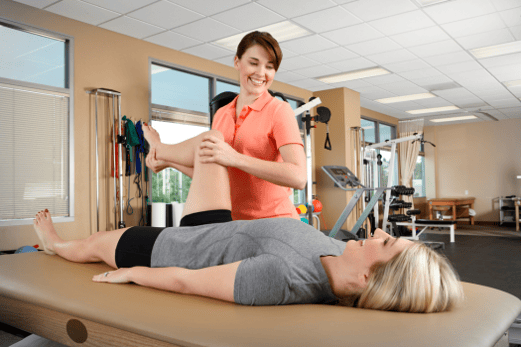
A discectomy is a surgical procedure that involves removing part or all of a damaged spinal disc that is pressing on a nerve or the spinal cord. A discectomy or less invasive microdiscectomy can relieve pain, numbness, tingling, or weakness caused by a herniated disc, also known as a slipped disc or bulging disc.
However, a discectomy is not a cure-all for back problems. After the surgery, you may still experience some residual symptoms, stiffness, or weakness in your back or legs. You may also have some scar tissue formation around the surgical site, which can affect your spinal mobility and stability.
That is why physical therapy is an essential part of your recovery after a discectomy. Physical therapy can help you regain your strength, flexibility, and function as well as prevent future back problems. This article explains some of the primary benefits of physical therapy after a discectomy.
Reduce Pain and Inflammation
Physical therapy can help patients reduce pain and inflammation after discectomy by using various modalities, such as ice, heat, electrical stimulation, ultrasound, or massage. These modalities can increase blood flow, decrease swelling, relax muscles, and stimulate healing.Your physical therapist can also teach you how to use proper body mechanics and posture to avoid putting unnecessary stress on your spine. You may also learn how to use assistive devices, such as a brace, walker, or cane, to support your back and reduce pain during your daily activities.
Restore Range of Motion and Flexibility
The surgical site may become stiff and immobile after the procedure. Physical therapists design customized exercise programs to gradually restore flexibility and mobility to the spine. This can prevent complications such as muscle atrophy and joint stiffness. Physical therapy can also help you restore range of motion and flexibility after a discectomy by using gentle stretching exercises to loosen up the muscles and ligaments around your spine.
Your therapist can also teach you how to perform self-mobilization techniques, such as spinal rolls, twists, or bends, to maintain your spinal flexibility and prevent stiffness. You may also learn gentle forms of lower back pain exercises as well as how to use a foam roller, a tennis ball, or a towel to massage and mobilize your spine at home.
Increase Strength and Stability
With physical therapy, you can increase your strength and stability after a discectomy by learning how to perform progressive resistance exercises. These exercises can help you strengthen the muscles that support your spine, such as the core, the back extensors, the glutes, and the hamstrings.You may also learn how to perform functional exercises, such as squats, lunges, bridges, or planks, to improve your spinal stability and balance. Your therapist may show you how to use an exercise ball, a band, or a kettlebell to challenge your core and back muscles in different positions.
Prevent Recurrence
Physical therapy plays a crucial role in preventing the recurrence of herniated discs by providing education and guidance on how to protect the spine and prevent future injuries. By addressing the underlying causes of the condition, therapists help patients make lifestyle changes that reduce the risk of future disc problems.
Your physical therapist can teach you how to perform preventive exercises, such as core stabilization, spinal decompression, or aerobic conditioning, to keep your spine healthy and strong. The physical therapist may also teach you how to recognize the signs and symptoms of potential problems, such as infection, nerve damage, or reherniation.
It is important to note that physical therapy after a discectomy is not a one-size-fits-all approach. Your physical therapist will design a personalized program that suits your condition and goals. You should follow your physical therapist’s instructions and recommendations carefully and report any changes in your symptoms or progress.
If you have had or are planning to have a discectomy for your back pain, talk to your doctor about the benefits of physical therapy after the surgery. Physical therapy can help you get back to your normal activities faster and more safely.
If you have any questions about the Barricaid treatment or how to get access to Barricaid, ask your doctor or contact us at 844-705-1081.
For full benefit/risk information, please visit: https://www.barricaid.com/instructions.


Comments